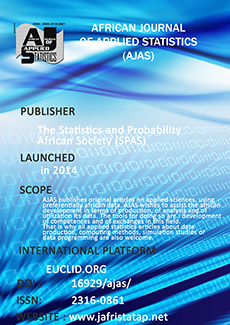Abstract
Islam entered Africa with its system of dogmas and rites transmission. Undoubtedly, the language and the Arabic script have spread with this religion. Arab-Islamic culture has remained since then, anchored in some parts of the continent, its values are transmitted and disseminated. It thus became a constituent of the local education system. Today a significant number of Africans attend Islamic institutions of higher learning, in primarily the older institutions such as Al Azhar, Qarawiyine, and Zeïtouna. Some attend the more recently opened Islamic these Sub-Saharan Africans. Thousands of Africans attended and still attend this educational institution Sall (2009). Scholars have explored their motivations and migration path : Kane (2003), Bava (2011), Bava (2009), Bava(2009) and Sall (2013). But their scientific trajectory, according to the possibilities offered by Al Azhar has not yet, as we know, interested the researchers. So, it is important to list the African graduates of Al Azhar from 1961 to 2005 in order to determine their scientific outlines. This would place them in terms of different skills and allow us to appreciate their varying potentials. As a result, it becomes possible to see what benefit these Al Azhar graduates can bring to their societies.
L'Islam a pénétré l'Afrique avec son système de transmission des dogmes et rites. Vraisemblablement, la langue et l'écriture arabe se sont répandues en même temps que cette religion. La culture arabo-islamique est restée depuis cette date ancrée dans certaines parties du continent. Ses valeurs y sont souvent à transmettre et à diffuser. Elle est devenue ainsi une des constituantes du système éducatif local. Aujourd'hui, un nombre important d'Africains fréquentent les institutions islamiques d'enseignement supérieur, principalement dans les anciennes institutions comme Al Azhar, Qarawiyine et Zeïtouna. Certains assistent aux institutions islamiques récemment ouvertes au Soudan, au Niger et en Ouganda. Lorsque ce type de formation n'existe pas dans leur pays, les Africains subsahariens ont été exilés au Moyen-Orient. Al Azhar, en Egypte, a accueilli un important groupe de ces Africains subsahariens. Des milliers d'Africains ont assisté et continuent d'assister à cette institution d'enseignement (Sall, 2009). Certains chercheurs ont exploré leurs motivations et leur chemin de migration à l'instar de : Kane (2003), Bava (2009), Bava (2009) et Sall (2013). Mais leur trajectoire scientifique, selon les possibilités offertes par Al Azhar, n'a pas encore, comme on le sait, intéressé les chercheurs. Il est donc important d'énumérer les diplômés africains de al Azhar de 1961 à 2005 afin de déterminer leurs contours scientifiques. Cela les mettra en relief les différentes compétences et nous permettra d'apprécier leurs potentiels. En conséquence, il devient possible de voir ce que ces diplômés d'Al Azhar peuvent apporter à leurs sociétés.
Citation
Mamadou Youry SALL. "Scientific profiles and potentialities of African graduates from the University Al–Azhar of Cairo and Statistical analysis." Afr. J. Appl. Stat. 1 (1) 5 - 12, November 2014. https://doi.org/10.16929/ajas/2014.1.5.53
Information





